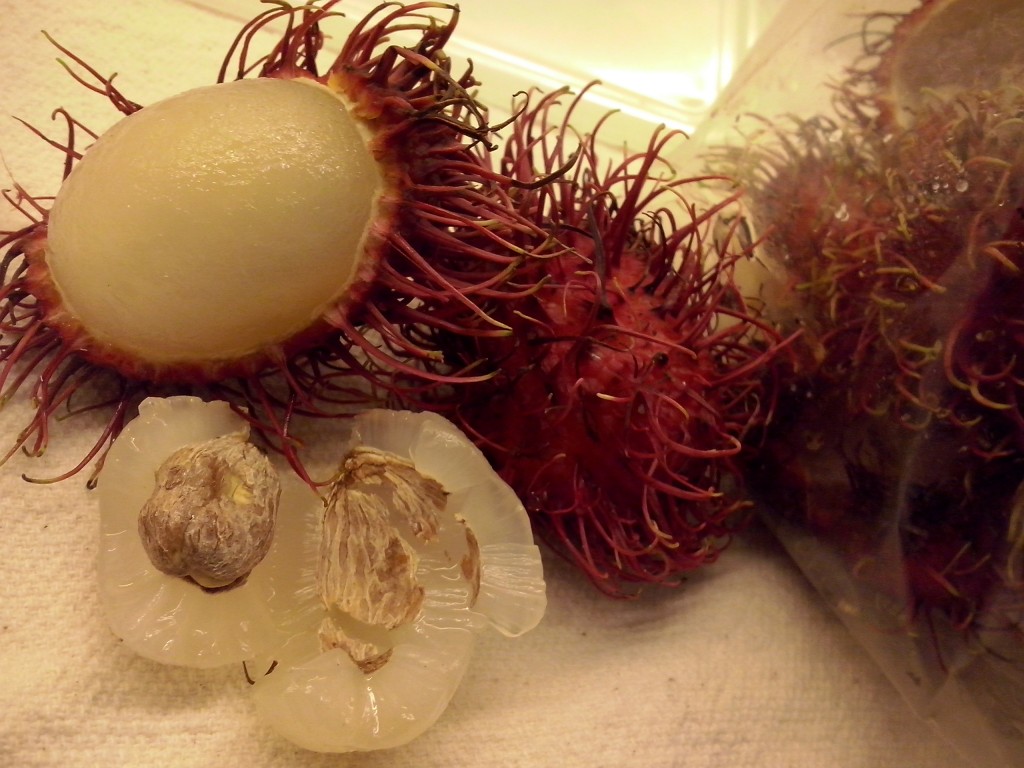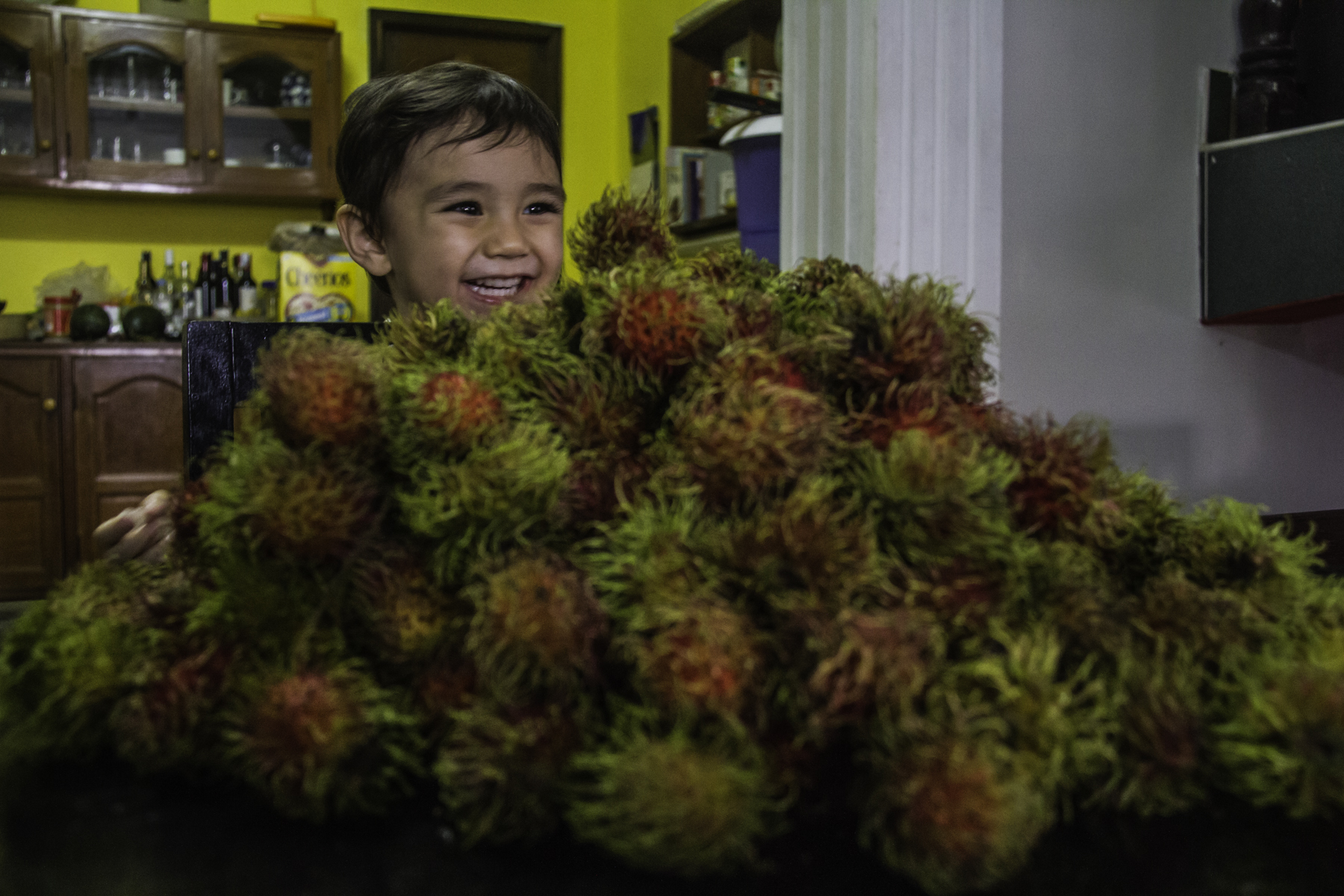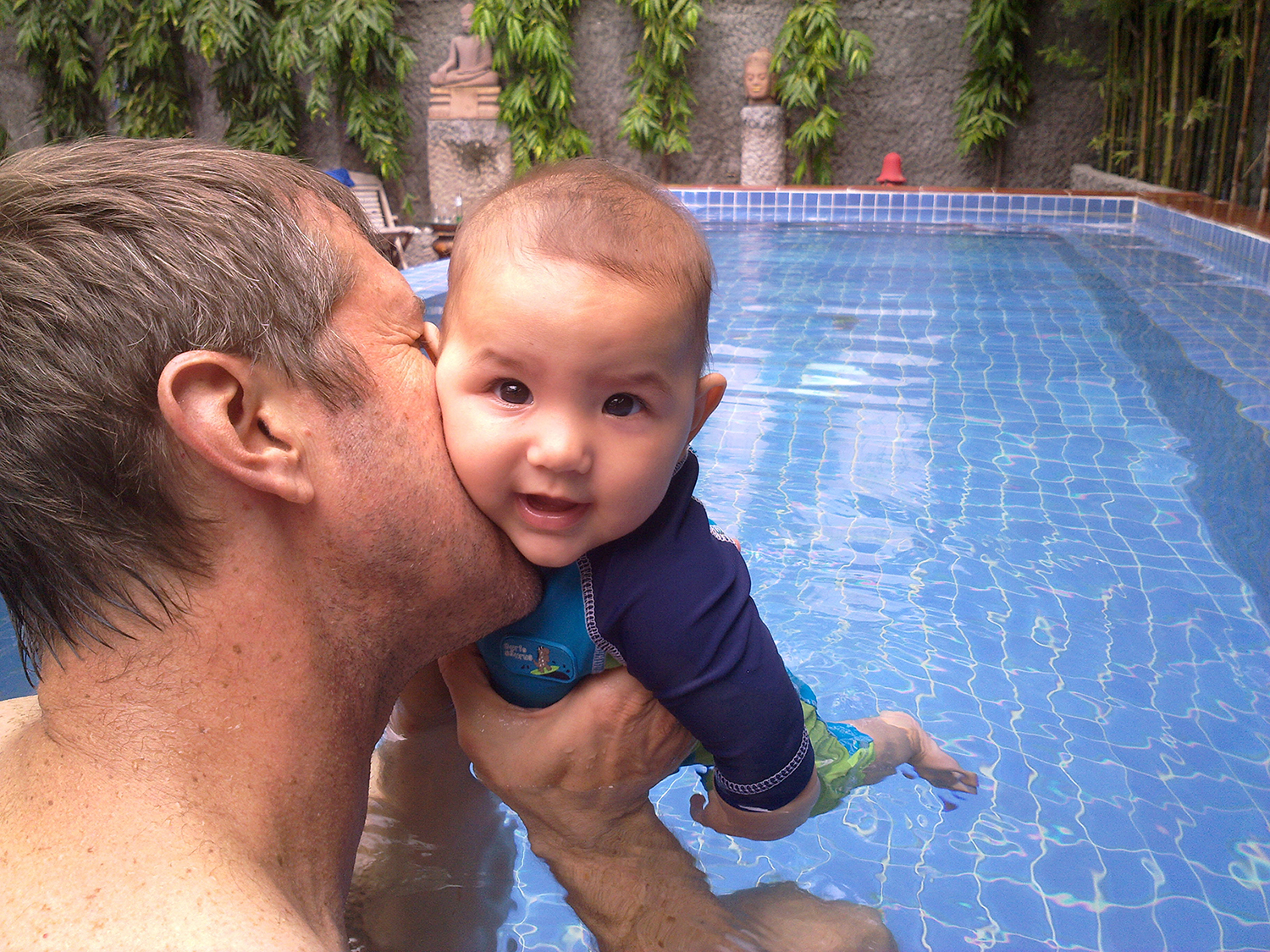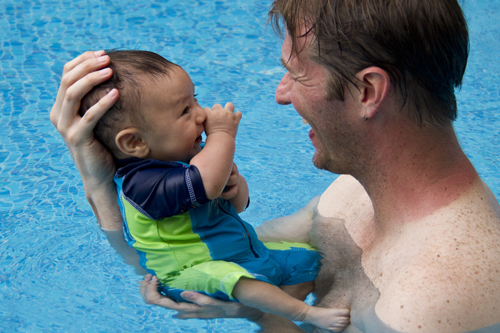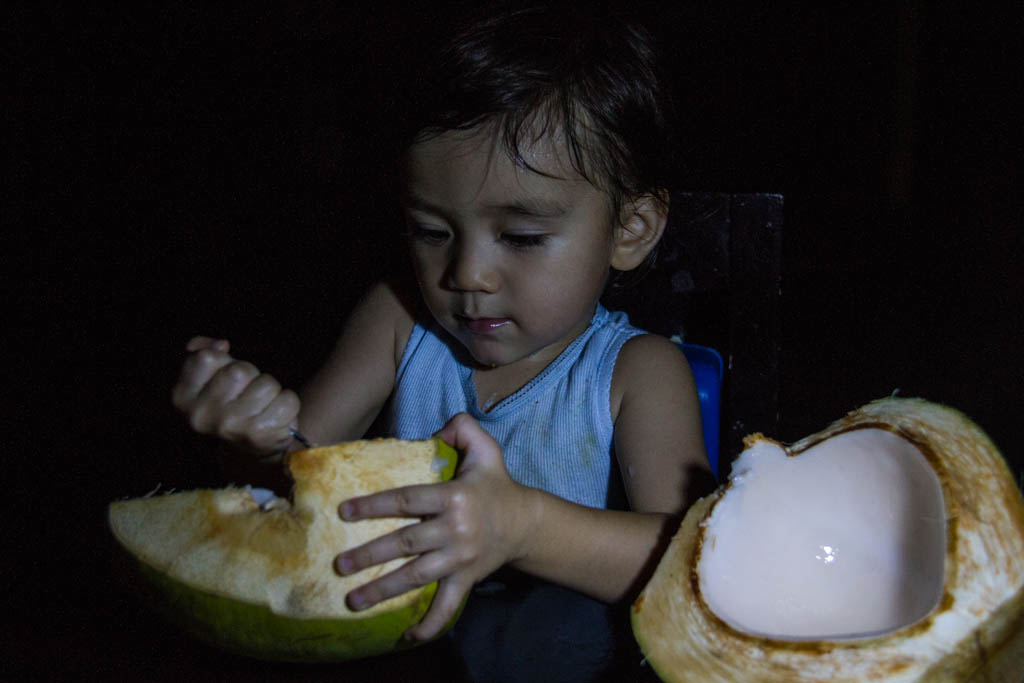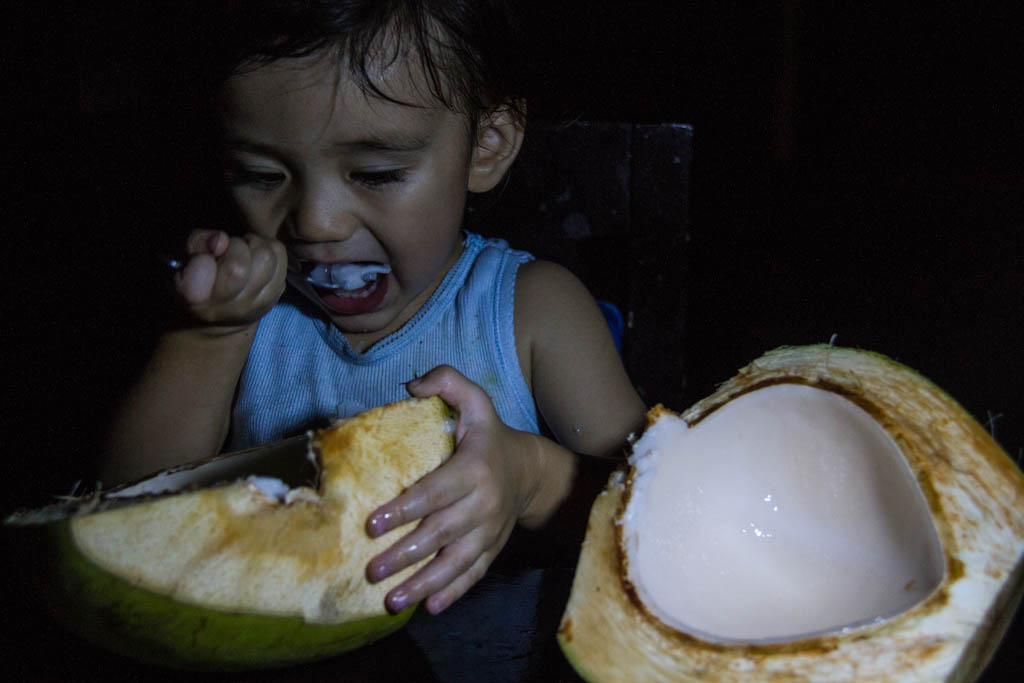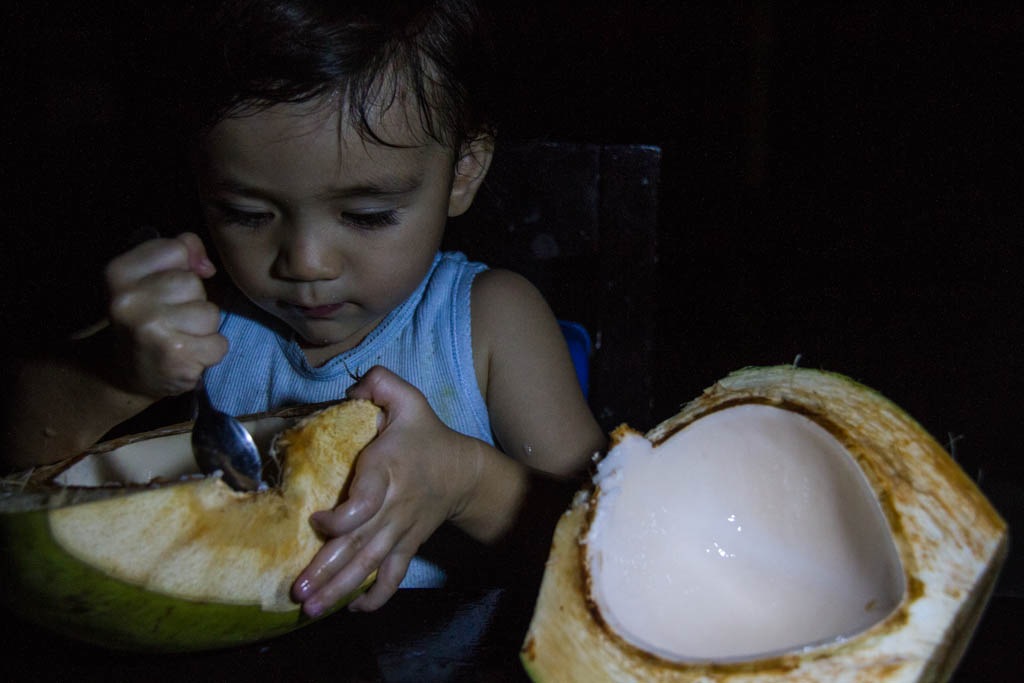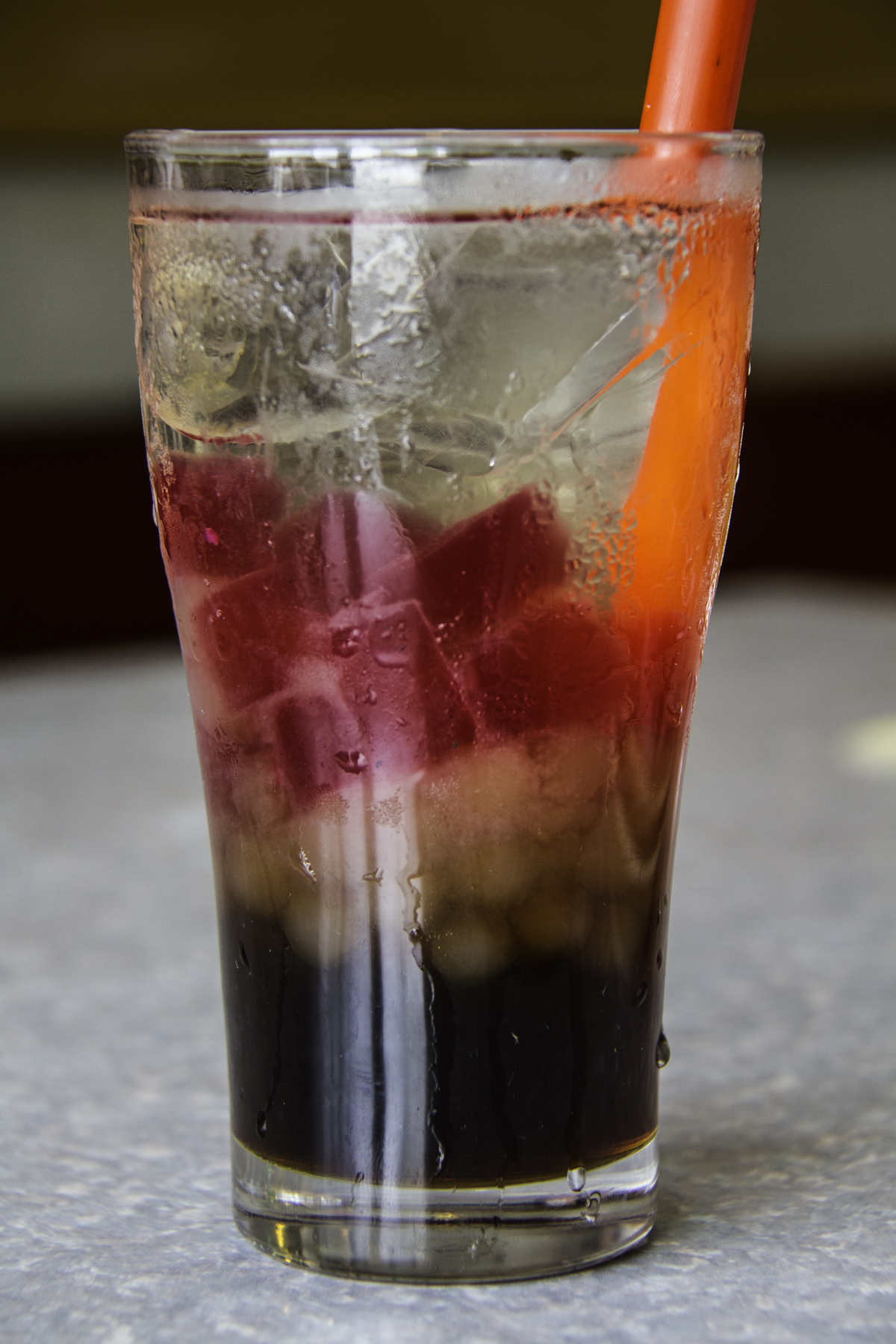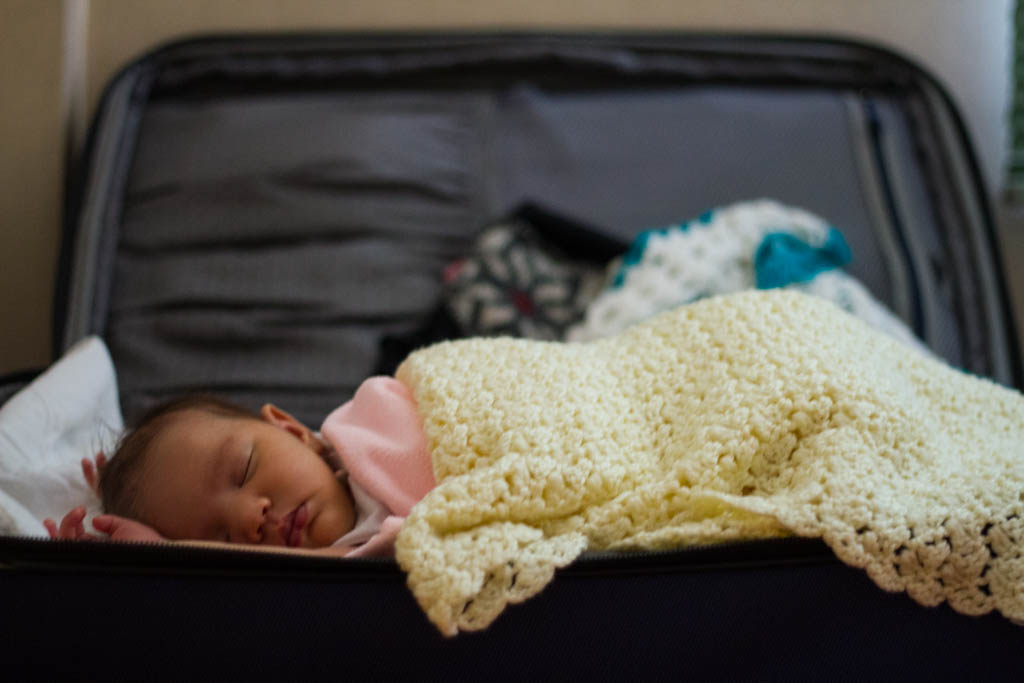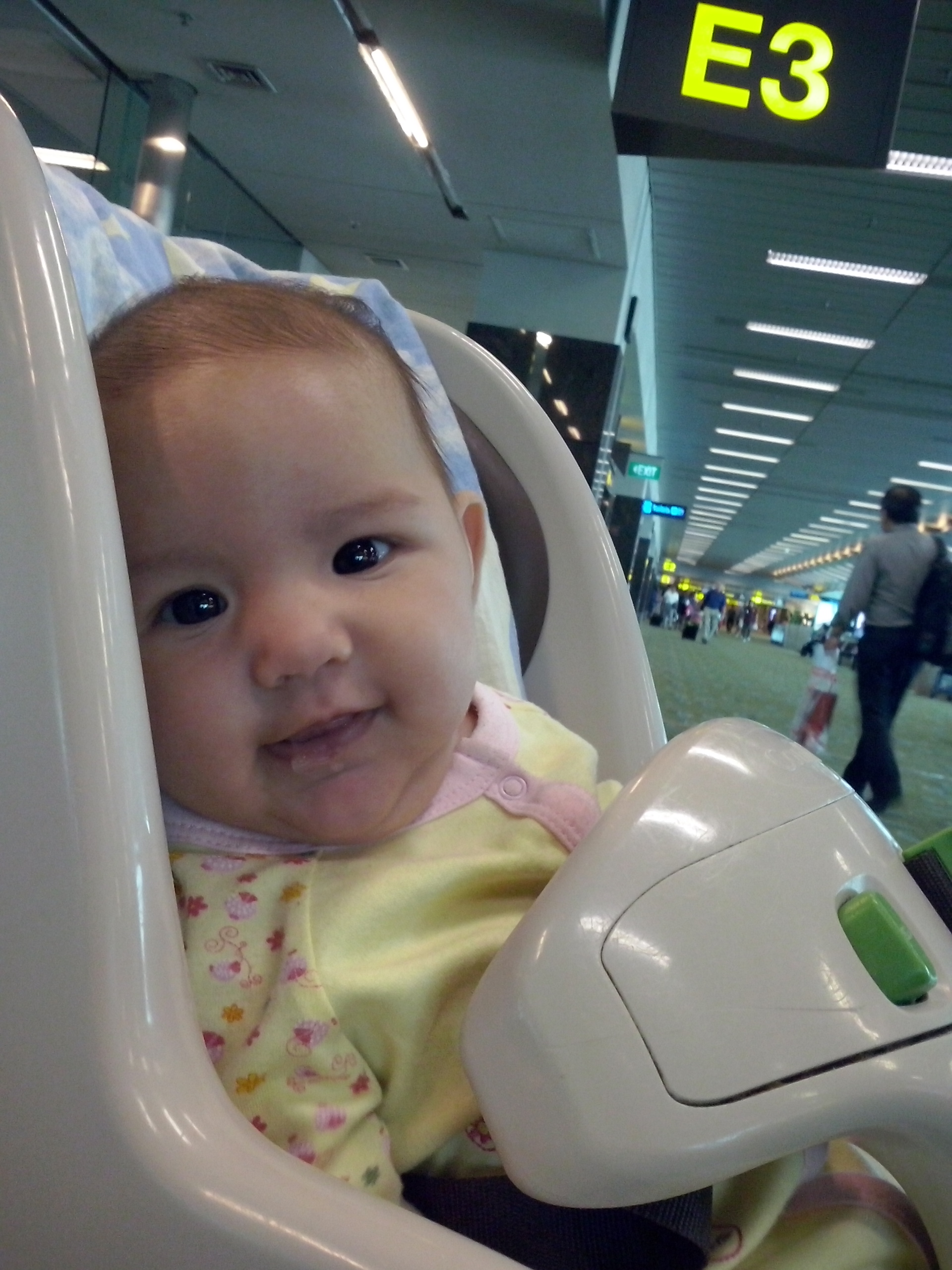I’m not a big fan of Rambutan (saw-maw in Khmer), mostly because the woody bark of the seed comes off with the meat (I guess it’s added fiber – see the picture below). But it’s incredible how much of this fruit our son can devour in one sitting. So I came home with 5kgs of it from a friend’s local farm and wouldn’t you know, some kid passed around Hand Foot Mouth at his petri dish pre-school and he broke out in rashes sores and blisters. Rambutans are too acidic for his mouth sores so he can only stare at them :-(
Life
Swim lessons for baby
Just a few dunks and babies’ water instincts take over. It was the same with our first when he was a baby. Teaching an infant to swim is fun cuz you see results so quickly. Too bad our older child had many months’ break from the water and developed a fear of it. At this point (he’s 2 1/2) I guess the best way to teach him is to toss him right in..?!
Things that keep a little boy happy through a night-time power cut
Filipino food: Sago at gulaman
While in Manila I became a huge fan of these coolers. Depending on the amount of syrup it can be sinfully sweet, but that can be adjusted. It’s refreshing and perfect for those hot Manila days (which was everyday)! Once I found out our incredible friend and helper, Openg, can make them I asked her to make it quite often.
As I have no cooking skills whatsoever, I copy a recipe below in entirety from Jun-blog, a Filipino food blog. You must check out his post on sago and gulaman coolers for great pics. His recipe below looks like what Openg made, with some adjustments. She put pandan leaves in the water when simmering the sago pearls. And she added coconut milk to the drink. The batches are stored in separate containers in the refrigerator, to be mixed fresh for each glass. Fresh coconut milk doesn’t last very long so when it ran out I added regular cow’s milk.
Sago and Gulaman Coolers, makes six to eight servings (recipe from Jun Belen)
For sago pearls
1/4 cup dark brown sugar
6 cups water
1/4 cup sago pearlsFor gulaman [Read more…] about Filipino food: Sago at gulaman
Having a baby in Manila vs. Having a baby in Bangkok (for expatriates)
… continued from Part I. Our first child was born in Bangkok’s Samitivej Hospital in January 2011, which I wrote about here. Our second was born in St Luke’s Medical Center, Taguig, Manila, in March 2013. Below is our experience in both countries.
As I mentioned in an earlier post, airlines restrict travel at 35 weeks 1 day gestation. Living costs have to be calculated from five weeks before the estimated due date, through the birth, and the time it takes to finalize the paperwork to clear you for exiting the country with the baby. Bureaucratic coordination is a tremendous help to medical tourists – particularly for births. Our overall experience:
- Bangkok‘s medical tourism industry is exceptionally efficient. Bureaucratic requirements for the birth through your baby’s exit clearance are transparent right from the beginning. It’s possible to plan ahead, budget properly, and concentrate on the birth. Hospital staff handled the paperwork and coordination across government departments on your behalf until you leave the country. We were able to go home when our son was 10 days old.
- Manila was the complete opposite, with inefficiency at every office, in a process that is not transparent. Information for foreigners coming to the Philippines to have a baby was sparse, with different people in the same hospital/government office offering conflicting information, and unfair fines levied (which we paid in order to move the process). The coordination required to secure our daughter’s documents (1) within the hospital, then (2)(3) from the hospital to/between the different government departments, was worse than poor. We were finally cleared to leave the country after 74 days.
Nursing care is a big factor [Read more…] about Having a baby in Manila vs. Having a baby in Bangkok (for expatriates)
Giving birth in Manila vs Giving birth in Bangkok (for expatriates)
As many of you know, most foreigners working in Cambodia and its neighboring countries fly to Bangkok for medical procedures. We chose to have our baby in Bangkok, Thailand, in January 2011, which I wrote about here on resources for foreigners. Due to airline policies we flew to Bangkok at 35 weeks gestation (they don’t want women having a baby while on board). This is a substantial amount of time away from work, so a speedy return back after the birth is ideal. Thanks to the extremely efficient medical tourism industry, we were able to leave Thailand with the baby an astonishing 10 days after birth. The official birth certificate, US passport, and exit clearance were all secured very quickly and painlessly. All engagement with government bureaucracy was expertly facilitated by a hospital representative. We spent two months, tops, in Bangkok.
This time around, for our second child’s birth, we decided to go to the Philippines. It took a week before the hospital sent Saoirse’s birth documents to the local registrar’s office. It took around four weeks before the National Statistics Office (NSO) released an official copy of her birth certificate (after we paid a fee to expedite the process). We secured an interview to report the birth abroad at the US Embassy two weeks later. After three weeks her passport was couriered to us. Finally, after some paperwork and lots of fees, the Bureau of Immigration gave us our daughter’s exit clearance. Compared to 10 days in Thailand, in the Philippines it took 74 days after birth before we were able to leave the country. We were in Manila nearly four months.
At least this was in a country where we had family, so the extremely long stay didn’t feel like an imprisonment. I wasn’t necessarily in a rush to get back to work, but it was stressful to wade through so much bureaucracy. The worst part is that it seemed as if few to no other Americans/foreigners have ever gone through it before! I assumed that with the medical caliber there, it would be one of the main medical destinations for foreign aid workers, diplomats and other expatriates working in the pacific island countries. Clearly not?!
I’ll be posting more about our experience being a medical tourist (having a baby as well as other medical procedures) in Manila and in Bangkok.
Anyway.. our little girl is “home” now. She was a trooper for her first flights (Manila to Singapore, then Singapore to Phnom Penh), sleeping through most of the travel while Tristan, now 27 months, was the one who kept us on our toes with his incessant need to run, touch everything, and tantrum every 15 minutes of the flight to Phnom Penh!
Other posts on this topic:
Maternity package rates at Bumrungrad (Bangkok) and St Luke’s hospital (Manila) Sept 28, 2013
Bumrungrad Hospital in pictures Sept 28, 2013
Having a baby in Manila vs. Having a baby in Bangkok (for expatriates) Aug 10, 2013
Living in Phnom Penh, Having a baby in Bangkok Feb 20, 2011
